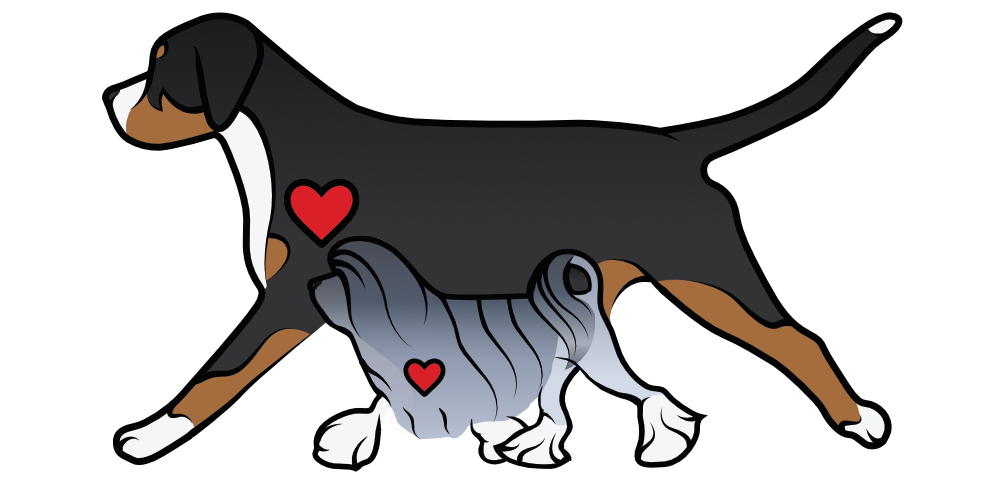I got returned from a draft trial just last night, and with the weekend fresh in my mind, we’re going to go over some draft trial tips and info before diving back into training posts. Here are some skills that I encourage my draft students to master before going to a draft trial.
Basic Control – both dog and handler will need to have a solid working relationship with several commands. For basic control, the dog that can qualify in rally obedience should have enough control for a draft test’s basic control. The dog needs to:
- sit on command
- stay in position for 3 minutes
- heel with the handler (not necessarily in heel position)
- turn left
- turn right
- halt (no sit needed)
- about turn
- recall (come when called)
Basic control is NOT scored like competitive obedience and the requirements are not as strict. The dog does NOT need to be in heel position at all time, and you may talk to your dog during the entire test (except the stays).
Harness and Hitching: You should be able to harness a dog correctly, and hitch a dog correctly. In my opinion, harnessing and hitching should not be a jerry-rigged last minute chore. It is first and foremost, the most crucial part of safety in dog drafting. Dog drafting is a sport that can be very dangerous to you and your dog if do not do it properly. Thusly, I am a stickler for safe harnessing and hitching. While I have not failed someone for minor issues with harnessing, I cannot pass a dog that is in an unsafe rig. Future posts on that.
Maneuvering course: My rule of thumb is if a dog can master the following exercises with only voice or hand commands and no treats, then they can pass any draft test. Yes, they are much more difficult than what is required, but I always try to train for tougher than the test.
- 360 clockwise pivoting on the inside wheel, but not moving it
- 360 counter-clockwise pivoting on the inside wheel, but not moving it
- Back up in cart 10 feet in a straight line
- Back up unhitched 10 feet in a straight line
- Pull through narrows that are two (yes, that’s two) inches wider than the cart for 15 feet
- Pull through high narrows that are two inches wider than the cart for 15 feet
- Parallel Park with no leash guidance
Freight Haul:
- Out of sight stay for 5 minutes
- Properly load and balance a cart
- Navigate a steep hill up and down
- Halt a dog
- Maintain control of a dog that likes to cart quickly
Happy Training!
